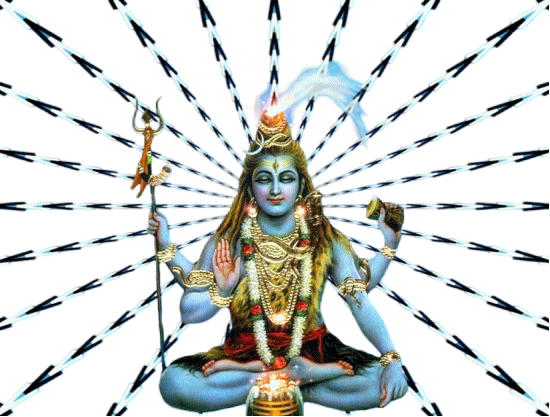




 The Wave Function lies at the heart of quantum mechanics. It is defined by Schrödinger's Equation and is the description of the quantum state of a system. It is more accurately described as a complex-valued probability amplitude (which means it is based in imaginary numbers and not exactly predictable.) A quantum state described by the wave function actually exists in a state of superposition and non-locality, as well as exhibits mysterious and classically inexplainable phenomenon such as quantum entanglement and quantum tunneling.
The Wave Function lies at the heart of quantum mechanics. It is defined by Schrödinger's Equation and is the description of the quantum state of a system. It is more accurately described as a complex-valued probability amplitude (which means it is based in imaginary numbers and not exactly predictable.) A quantum state described by the wave function actually exists in a state of superposition and non-locality, as well as exhibits mysterious and classically inexplainable phenomenon such as quantum entanglement and quantum tunneling.
Although the wave function describes a kind of physical phenomenon, it is open to a wide variety of different interpretations and just like other derived oddities in quantum mechanics, it is mysterious and lacking in real definition. Whether the wave function really exists, and what it represents, are major issues in the interpretation of quantum mechanics.
The most common symbol for the wave function is the Greek letter psi Ψ which is very ironic as this symbol is very similar to the astrological symbol for the planet Neptune.
I first noticed this while taking notes in courses with quantum mechanics when I kept writing the Neptune symbol instead of psi (I've been doing astrology for many years so it came naturally out of habit.) The only difference between the letter psi Ψ and the symbol for Neptune is the bar that's through the Ψ turning it into the trident of Neptune. At first I thought it was a clearly unconscious mistake on my part and tried to correct it. Yet after numerous failed attempts and continuous repetition of turning Ψ into the Neptune symbol I finally stopped to reflect on it and it was then that I realized how accurate of a description it really was...
In astrology, Neptune is the planet of Illusion. Associated with mysticism and magic, Neptune is the ruler of all things ethereal and mysterious, formless and intangible, lacking in definition and boundaries. Neptune is the perfect description of māyā, the Sanskrit word for the illusion of reality, and hence it is the perfect description for the wave function.
The Neptune symbol is about the only thing direct and straight-forward about the subject of Neptune. The cross at the lower end of the symbol is symbolic of matter, the root of things - the crux of nature. The cross of matter is the stabilizer amongst the potentially ethereal, mysterious or erratic energies Neptune can represent.
The three pronged pitchfork portion on top of the Neptune symbol represents a trident, which was associated with the god Neptune, (Poseidon in Greek) which is the god of the deep, unfathomable waters, the limitless oceans of the collective unconsciousness.
Not so commonly known is the trident of the Neptune symbol also represents the threefold essences of nature. Empirically speaking this threefold essence is comprised of: Birth, Life, Death and more generally, Becoming, Being, and Passing away.
These Neptunian themes are a strikingly accurate description for the wave function.
Another interesting astrological correspondence is found with Planck's constant, also a central figure in quantum mechanics and also found in Schrödinger's equation. The symbol for Planck's constant resembles the symbol for Saturn.
Planck's constant can be described as the smallest possible boundary containment on the quantum scale. Planck's constant is a measurement of quantum effects, and it sets limitations to our knowledge of reality on the quantum level.
In astrology, Saturn is the planet of restriction, limitation and boundaries.
The Saturn symbol is composed of two elements. The top cross which as already discussed is symbolic of the culmination of matter. The second component of the Saturn icon is a lunar crescent, an element which signifies receptivity as well as having associations to the astral plane and the waters. The moon is in fact a lower octave of Neptune. The cross above the crescent represents matter dominating the ethereal, astral waters, representing the Saturnian themes of limitation and restriction. It represents material dominance over the astral, ethereal or spiritual.
This lower "crescent" portion of the Saturn symbol is also reminiscent of a scythe or sickle. This is of particular interest because the symbolism of the planet Saturn (and the god Saturn) often addresses themes of death. Note that in the archetype of death, this personification carries the sickle to acknowledge the opportune moment of harvesting life.
Although seemingly negative in expression, Saturn is actually a very stabilizing influence. Saturn represents a facilitating energy. Without Saturn, there would be no stability or structure, no discipline, perseverance or hard work. Nothing in the universe could get accomplished, no dreams could be manifested in reality.
The symbolism of Saturn is also a perfect representation of the Planck's constant, not only due to its associations with limits, restrictions and constraint, but also because the Planck's constant shows up in all quantum mechanical equations that have anything to do with the materializing effects of quantum phenomenon. Like the stabilizing influences of Saturn, without Planck's constant there would be no quantization of matter, no materializing effects of quantum phenomenon to give structure and stability to reality, solidifying the illusionary māyā and the boundless waters represented by the Neptunian wave function.
In short, the fact that the wave function of a quantum mechanical system is described by the symbol for Neptune and the Planck's constant by the symbol for Saturn is an accurate truth and a perfect description in my opinion. After realizing these striking correspondences I finally stopped trying to correct my symbol for the wave function. To this day I still write the Neptune symbol in stead of Ψ and even Saturn for Planck's constant in all my mathematical scribblings in quantum mechanics.

I want to know why I'm alive. I want to understand. It's like exploration; it's like someone being interested in a place and its history, digging into the earth and looking for it, searching - it's a passion.

